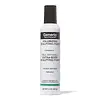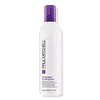What's inside
What's inside
 Key Ingredients
Key Ingredients

No key ingredients
 Benefits
Benefits

No benefits
 Concerns
Concerns

 Ingredients Side-by-side
Ingredients Side-by-side

Water
Skin ConditioningButane
Vp/Va Copolymer
Propane
Polyquaternium-11
Parfum
MaskingPPG-5-Ceteth-20
EmulsifyingPEG-12 Dimethicone
Skin ConditioningSteareth-21
CleansingDipropylene Glycol
HumectantDiazolidinyl Urea
PreservativePropylene Glycol
HumectantCocamidopropyl Hydroxysultaine
CleansingPentaerythrityl Tetracaprylate/Tetracaprate
EmollientCocamidopropyl Betaine
CleansingBisamino PEG/PPG-41/3 Aminoethyl Pg-Propyl Dimethicone
Butylene Glycol
HumectantHedychium Coronarium Root Extract
MaskingTetrasodium EDTA
Phenoxyethanol
PreservativeAlpha-Isomethyl Ionone
PerfumingBenzyl Benzoate
AntimicrobialHexyl Cinnamal
PerfumingLinalool
PerfumingWater, Butane, Vp/Va Copolymer, Propane, Polyquaternium-11, Parfum, PPG-5-Ceteth-20, PEG-12 Dimethicone, Steareth-21, Dipropylene Glycol, Diazolidinyl Urea, Propylene Glycol, Cocamidopropyl Hydroxysultaine, Pentaerythrityl Tetracaprylate/Tetracaprate, Cocamidopropyl Betaine, Bisamino PEG/PPG-41/3 Aminoethyl Pg-Propyl Dimethicone, Butylene Glycol, Hedychium Coronarium Root Extract, Tetrasodium EDTA, Phenoxyethanol, Alpha-Isomethyl Ionone, Benzyl Benzoate, Hexyl Cinnamal, Linalool
Water
Skin ConditioningIsobutane
Vp/Va Copolymer
Hedychium Coronarium Root Extract
MaskingPEG-12 Dimethicone
Skin ConditioningBisamino PEG/PPG-41/3 Aminoethyl Pg-Propyl Dimethicone
Steareth-21
CleansingPolyquaternium-11
Cocamidopropyl Betaine
CleansingCocamidopropyl Hydroxysultaine
CleansingDiazolidinyl Urea
PreservativePPG-5-Ceteth-20
EmulsifyingCaprylyl Glycol
EmollientPhenoxyethanol
PreservativePentaerythrityl Tetracaprylate/Tetracaprate
EmollientPropane
Sodium Chloride
MaskingLaurtrimonium Chloride
EmulsifyingSodium Bisulfite
AntioxidantParfum
MaskingHexyl Cinnamal
PerfumingHydroxycitronellal
PerfumingLimonene
PerfumingWater, Isobutane, Vp/Va Copolymer, Hedychium Coronarium Root Extract, PEG-12 Dimethicone, Bisamino PEG/PPG-41/3 Aminoethyl Pg-Propyl Dimethicone, Steareth-21, Polyquaternium-11, Cocamidopropyl Betaine, Cocamidopropyl Hydroxysultaine, Diazolidinyl Urea, PPG-5-Ceteth-20, Caprylyl Glycol, Phenoxyethanol, Pentaerythrityl Tetracaprylate/Tetracaprate, Propane, Sodium Chloride, Laurtrimonium Chloride, Sodium Bisulfite, Parfum, Hexyl Cinnamal, Hydroxycitronellal, Limonene
Ingredients Explained
These ingredients are found in both products.
Ingredients higher up in an ingredient list are typically present in a larger amount.
Bisamino PEG/PPG-41/3 Aminoethyl Pg-Propyl Dimethicone is a type of silicone.
Cocamidopropyl Betaine is a fatty acid created by mixing similar compounds in coconut oil and dimethylaminopropylamine, a compound with two amino groups.
This ingredient is a surfactant and cleanser. It helps gather the dirt, pollutants, and other impurities in your skin to be washed away. It also helps thicken a product and make the texture more creamy.
Being created from coconut oil means Cocamidopropyl Betaine is hydrating for the skin.
While Cocamidopropyl Betaine was believed to be an allergen, a study from 2012 disproved this. It found two compounds in unpure Cocamidopropyl Betaine to be the irritants: aminoamide and 3-dimethylaminopropylamine. High-grade and pure Cocamidopropyl Betaine did not induce allergic reactions during this study.
Learn more about Cocamidopropyl BetaineCocamidopropyl Hydroxysultaine is a synthetic cleansing agent, though it is derived from coconut oil.
It is used to enhance the texture of products by boosting lather and thickening the texture. As a cleanser, Cocamidopropyl Hydroxysultaine is mild.
Diazolidinyl Urea is an antimicrobial preservative. It is commonly used to prevent bacterial, yeast, and mold growth.
Diazolidinyl Urea slowly breaks down into formaldehyde, an effective microbe killer but also a known allergen/carcinogen.
Some people who are allergic to imidazolidinyl urea also react to diazolidinyl urea. It ranked as the 14th most common allergen in patch tests from 2005–06.
Safety reviews show that at concentrations under 0.5%, the formaldehyde released remains below the accepted safety limit, making it considered safe for cosmetic use.
Ultimately, its safety depends on individual skin sensitivity and personal comfort with formaldehyde-releasing preservatives.
Learn more about Diazolidinyl UreaWe don't have a description for Hedychium Coronarium Root Extract yet.
Hexyl Cinnamal is a fragrance ingredient with a similar scent to jasmine. It can be naturally found in chamomile essential oil.
This ingredient is a known EU allergen and may sensitize the skin. The EU requires this ingredient to be listed separately on an ingredients list.
Hexyl Cinnamal is not water soluble but is soluble in oils.
Learn more about Hexyl CinnamalParfum is a catch-all term for an ingredient or more that is used to give a scent to products.
Also called "fragrance", this ingredient can be a blend of hundreds of chemicals or plant oils. This means every product with "fragrance" or "parfum" in the ingredients list is a different mixture.
For instance, Habanolide is a proprietary trade name for a specific aroma chemical. When used as a fragrance ingredient in cosmetics, most aroma chemicals fall under the broad labeling category of “FRAGRANCE” or “PARFUM” according to EU and US regulations.
The term 'parfum' or 'fragrance' is not regulated in many countries. In many cases, it is up to the brand to define this term.
For instance, many brands choose to label themselves as "fragrance-free" because they are not using synthetic fragrances. However, their products may still contain ingredients such as essential oils that are considered a fragrance by INCI standards.
One example is Calendula flower extract. Calendula is an essential oil that still imparts a scent or 'fragrance'.
Depending on the blend, the ingredients in the mixture can cause allergies and sensitivities on the skin. Some ingredients that are known EU allergens include linalool and citronellol.
Parfum can also be used to mask or cover an unpleasant scent.
The bottom line is: not all fragrances/parfum/ingredients are created equally. If you are worried about fragrances, we recommend taking a closer look at an ingredient. And of course, we always recommend speaking with a professional.
Learn more about ParfumPEG-12 Dimethicone is a type of water-soluble silicone. It has skin conditioning and hydrating properties.
According to a manufacturer, this ingredient's stability is decreased by strong acid or alkali.
Pentaerythrityl Tetracaprylate/Tetracaprate is a mixture of pentaerythritol, caprylic and capric acid.
Phenoxyethanol is a preservative that has germicide, antimicrobial, and aromatic properties. Studies show that phenoxyethanol can prevent microbial growth. By itself, it has a scent that is similar to that of a rose.
It's often used in formulations along with Caprylyl Glycol to preserve the shelf life of products.
We don't have a description for Polyquaternium-11 yet.
We don't have a description for PPG-5-Ceteth-20 yet.
Propane is a gas derived from petroleum and natural gas. It is used as a propellant.
This ingredient is most commonly used in shaving cream, hair products, and makeup.
We don't have a description for Steareth-21 yet.
We don't have a description for Vp/Va Copolymer yet.
Water. It's the most common cosmetic ingredient of all. You'll usually see it at the top of ingredient lists, meaning that it makes up the largest part of the product.
So why is it so popular? Water most often acts as a solvent - this means that it helps dissolve other ingredients into the formulation.
You'll also recognize water as that liquid we all need to stay alive. If you see this, drink a glass of water. Stay hydrated!
Learn more about Water